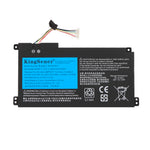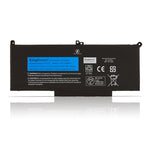You have no items in your shopping cart.
Should you leave your MacBook plugged in all the time? Is constant charging harmful?

If you have the symptoms of constantly checking the battery, repeatedly wondering whether it is better to unplug or plug in the power, and feeling uneasy when staying in a place that does not provide continuous charging convenience, then you may have battery anxiety.
Apple's MacBook series is known for its excellent build quality and excellent user experience, and is considered the best among many product lines. However, this does not mean that they are indestructible. In fact, products like MacBook that use polymer lithium batteries will have a longer overall lifespan if the power is maintained at 20%-80%. If they are plugged in for a long time like a desktop computer, the power can be maintained at 100% for a long time. The overcharge state will permanently damage the capacity of the lithium battery.
This conclusion comes from the MacBook charging strategy. The macOS BigSur system is online to optimize the battery charging function, which can learn the user's daily charging pattern. The charging process of laptop computers can be divided into two stages: fast charging and trickle charging. In the fast charging stage, the charger works at almost full power and quickly charges to 80% of the battery.
After charging stops at 80% or is trickle full, the MacBook's built-in power management chip will no longer charge the battery, and the MacBook will use external charging. provided with the charger. Keeping your laptop plugged in won't damage the battery, but it may have some side effects: heat. This is really a problem for MacBooks.
One of the scariest alerts MacBook users see is "Service Battery". So should you keep the power plugged in when using your Macbook?
The Macbook does a lot of things, too. When the battery has more power, the charging speed will be slowed down to protect the battery through trickle charging. You can set it to optimize battery charging and slow down battery aging. In addition, the external charger will give priority to directly powering the MacBook. If higher power is available, the battery will be charged.
Therefore, the external charger will reduce the number of battery cycles, thereby increasing battery life. But no matter what, the battery is a consumable item and will still be lost as long as it is used.
No matter what you do, batteries won't last forever. However, there are some simple methods you can follow to take good care of your battery. This will ensure your MacBook Pro battery stays healthy for years to come, providing you with powerful backup power every time you charge it.
1. Check battery health
MacBook monitors the health of the battery based on its original functionality. When you hover over the battery icon on the status bar at the top of the screen, a dialog box pops up showing the battery status, remaining charge, and a list of apps that are using a lot of power. You'll see one of the following status indicators:
Normal: The battery function is normal.
Recommended repair: The battery's storage capacity is lower than that of a new battery, or the battery is not functioning properly. Although you can continue to use your Macbook safely in this state, the best way is to take it to a repair center for a battery evaluation.
2. Let the battery charge and discharge naturally once in a while.
While leaving your laptop plugged in won't damage the battery, it may have some side effects: heat. This is really a problem for MacBooks. Because the MacBook battery continues to be in high power mode, heat can affect MacBook performance. If its internal components get too hot, they become restricted, which means the laptop will reduce its power in order to keep the temperature from getting too high. In addition, when charging, try not to let the machine work at high temperatures, especially when the MacBook lid is connected to an external monitor, because high temperature is also a cause of battery bulging. The general recommendation is to run the MacBook on battery until it reaches low power for about a month.
3. Avoid high or low temperature environments
Leaving your laptop in an environment that is too hot or too cold can damage the battery. It is recommended to maintain room temperature when using the computer, and choose a light-proof, dry, and ventilated environment when storing the computer. At the same time, it is recommended that the temperature of MacBook be kept between 0℃~35℃ during use.
4. Turn off the device
There are many devices on a MacBook laptop, such as optical drives, wireless, Bluetooth, etc. When we are using the battery, we can turn off Bluetooth or wireless if we are not using them. Because some devices consume power even if they are not in use.
5. Keep the system up to date
Apple upgrades the system at regular intervals, including some updates that optimize power management.
I recommend using the device connected to a power source if possible. But if in some cases this isn't possible, don't worry. A laptop is just a consumable item. If the battery life is shortened and cannot meet the needs of daily use, the battery can be replaced with a new one at any time.
What are the symptoms of MacBook Pro that require battery replacement?
1. Unable to maintain charge: If your MacBook battery cannot maintain a charge or dies quickly even after being fully charged, it indicates that the battery is no longer working properly.
2. Unable to charge: When the MacBook Pro battery cannot be charged at all, it may indicate that there is a problem with the battery or charging system, causing the battery to be unable to charge.
3. Overheating: MacBook Pro battery will automatically shut down when it overheats. So if your MacBook battery often feels hot, it could be a sign of a battery problem.
4. Battery drains quickly: If your MacBook Pro battery drains faster than usual, it may be a sign that the battery is no longer maintaining charge effectively, causing the battery to drain quickly.
5. Repair warning: When your MacBook Pro displays a battery repair warning or a message similar to "Replace soon", "Replace now" or "Repair battery", it means that the battery has reached the end of its life and needs to be replaced.
6. Swelling: Battery swelling is a clear sign of damage, and a swollen battery can be dangerous. Therefore, immediate attention is required in this case.
Should I choose Apple after-sales service or a third party to replace the MacBook Pro battery?
We all know that when the use time of a laptop exceeds the warranty period, the cost of replacing the original battery at an official after-sales service center is generally not cheap. Not only do you need to bear the cost of the battery, but you also need to bear the labor time of the maintenance personnel. Moreover, the capacity and performance of the original replacement MacBook are basically the same as the MacBook Pro you originally removed, both of which come from Apple.
Third-party batteries are generally customized according to Apple's specifications, and the battery capacity may be higher or lower. If your MacBook battery comes from a MacBook battery manufacturer with a decent brand reputation, you can get a battery of premium quality.

Apple MacBook Pro A1713 laptop battery- Kingseenr | BatteryMall
In short, when replacing the battery, choosing an Apple authorized repair center to replace the original MacBook battery can ensure reliability. However, due to the high price and the fact that you have more expectations for the battery, you can also purchase it from a third-party brand.
How to choose a guaranteed third-party brand?
1. The safety of the battery is the first priority. We can judge by looking at the battery’s certification report and certificate. There are many certifications for brand batteries used in export trade. Based on different standards, there are also CE, ICC, PSE, etc. Relevant battery certification.
2. The quality of batteries mainly depends on raw materials and technology. First of all, you must consider what batteries and protective boards are used. Currently, lithium-ion polymer batteries and some IC batteries are mainly used. The stability of the battery depends on the raw materials used.
Secondly, we must consider whether charge and discharge tests, full charge and discharge tests, and aging tests have been performed during the battery production process. These tests determine the battery's service life. In addition, capacity division is also an important factor, which determines whether the battery capacity is sufficient.
3. The after-sales warranty period of most computer batteries is one year, while some brands provide more than two years of warranty and free replacement of new batteries. This shows that brands are very confident in their batteries. Although the battery is not easily damaged, some minor issues may arise during installation or subsequent use. For example, if you find that the battery power drops too quickly after using it for a few days, what should you do if you want to replace the battery? At this time, after-sales service can quickly solve the problem. Therefore, try to choose a battery that comes with a warranty.
Summary: Keeping the power on or using it while charging for a long time will not speed up the loss of MacBook battery. In addition, there is no need to pay special attention to the problem of always keeping the battery plugged in or using the battery. Lithium batteries themselves are consumables, and the number of charging cycles within the product life cycle of 3-5 years is in line with normal use requirements. What's more important is to avoid excessive discharge, charging and use in extreme environments.
These are answers to questions about whether to keep your MacBook Pro plugged in when using it and whether using it while charging is harmful. And given some battery maintenance methods, please try the above steps to see if they help you. If you have further questions, please visit our blog for more information.
If this article still doesn't help your laptop battery, you can buy a new battery at BatteryMall.com
If you want to learn more about batteries, please visit:BatteryMall.com/blogs/support








